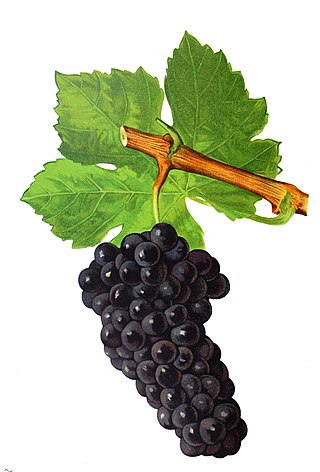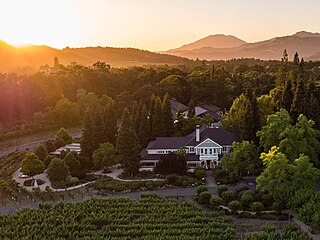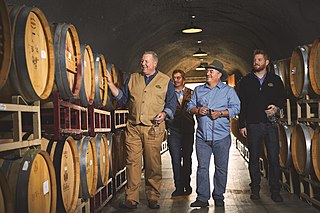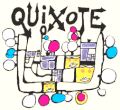
Durif is a variety of red wine grape primarily grown in Australia, California, France, and Israel. Since the end of the 20th century, wineries located in Washington's Yakima River Valley, Maryland, Arizona, Texas, West Virginia, Chile, Mexico's Baja California Peninsula, and Ontario's Niagara Peninsula have also produced wines from Durif grapes. It is the main grape known in the U.S. and Israel as Petite Sirah, with over 90% of the California plantings labeled "Petite Sirah" being Durif grapes; the U.S. Bureau of Alcohol, Tobacco, Firearms and Explosives (ATF) recognizes "Durif" and "Petite Sirah" as synonyms for the same grape. It produces tannic wines with a spicy, plummy flavour. The grape originated as a cross of Syrah pollen germinating a Peloursin plant. On some occasions, Peloursin and Syrah vines may be called Petite Sirah, usually because the varieties are extremely difficult to distinguish in old age.

Stag's Leap Wine Cellars is a winery founded by Warren Winiarski in 1970 and based in the Stags Leap District of Napa Valley, California.
Stags' Leap Winery is a winery located near Yountville, California, United States, in the Stags Leap District of Napa Valley. The winery's 240-acre (97 ha) estate vineyard was first planted in 1893. In 1997, Stags' Leap was purchased by Beringer Wine Estates, which in 2000 was in turn purchased by the Australian company Foster's Group, whose two wine groups combined to become Beringer-Blass Wine Estates. Beringer-Blass was demerged from Fosters in 2011 to become Treasury Wine Estates. Robert Brittan continued the revitalization of the vineyards and winery until 2005.

Paul Draper is a California winemaker who has been the chief winemaker at Ridge Vineyards in California since 1969. Without any formal training in winemaking, Draper first gained recognition for his 1971 Monte Bello Cabernet Sauvignon when it placed fifth at the Judgment of Paris wine tasting. Draper has played a significant role in the history of California wine through his pioneering work in popularizing "vineyard-designated" wines as well as instigating the resurgence of old vine Zinfandel. Along with Ravenswood Winery's Joel Peterson, Draper is considered one of the most important figures in the history of Californian Zinfandel, rescuing the grape from obscurity and demonstrating its full potential as a serious wine. Draper was featured in a short film titled Terroir and directed by Christopher McGilvray which was shown at the 2017 Cinequest Film Festival.

B.R. Cohn Winery is a winery in Sonoma Valley, California in the United States.
Heidi Peterson Barrett is an American winemaker and entrepreneur who has been responsible for some of California's most notable cult wines. Her career has included stints at Screaming Eagle, Dalla Valle Vineyards, Paradigm Winery, Grace Family Vineyards, Amuse Bouche, Lamborn Family, Showket Vineyards, Revana Family Vineyards, Vineyard 29 and Fantesca. Barrett is a consultant for Elizabeth Spencer and has her own wine label, La Sirena.

The Duckhorn Portfolio Inc. is an American wine company producing varietal labelled and blended red, white, rosé, and sparkling wines from California and Washington State. The main winery, Duckhorn Vineyards, is outside St. Helena, California.

J. Lohr Vineyards & Wines is a winemaking company headquartered in San Jose, California, with over 4,000 acres of estate vineyards in the Paso Robles AVA in San Luis Obispo County, Arroyo Seco and Santa Lucia Highlands AVAs in Monterey County, and the St. Helena AVA in Napa Valley, California. The family-owned and operated company was founded by Jerry Lohr in 1974. The company operates wineries in San Jose, Paso Robles, and Greenfield, California. In 2013, Steve Lohr was appointed CEO of the company. J. Lohr Vineyards & Wines’ product portfolio includes eight tiers of wine: J. Lohr Signature, J. Lohr Cuvée Series, J. Lohr Vineyard Series, J. Lohr Gesture, J. Lohr Pure Paso Proprietary Red Wine, J. Lohr Monterey Roots, J. Lohr Estates and ARIEL Vineyards. The portfolio also includes specialty brands Cypress Vineyards and Painter Bridge. J. Lohr ranks among the top 25 wine producers in the United States, with annual US sales exceeding 1.8 million cases.

Twisted Oak Winery is a family-owned boutique winery in Vallecito, California specializing in wine made from grape varieties native to the Mediterranean regions of western Europe. The winery is located on a hilltop at 2280 ft above sea level in the foothills of the Sierra Nevada Mountains, and most of the grapes for the wines are sourced from nearby vineyards in Calaveras County. The winery name and logo design are derived from a California Blue Oak tree on the property.

Screaming Eagle Winery and Vineyards is a California wine estate producing limited amounts of varietal wine; due to the small quantities produced and high prices commanded, their wines are considered cult wines. The winery is located in Oakville, California, north of the town of Napa in the Napa Valley.

Turley Wine Cellars is a popular California wine producer with wineries in both Templeton and St. Helena. Turley wines are often recognized as "making some of the best, if not the best Zinfandel in California for decades." Becoming a recipient of the winery's private wine club can take up to two years.

Brown Estate Vineyards is a winery in Napa Valley, California, United States. It produces zinfandel, cabernet sauvignon, chardonnay, and petite sirah varieties. Founded in 1995 by siblings Deneen, David and Coral Brown, Brown Estate produced its first Napa Valley zinfandel in 1996 after the family had been farming grapes and selling them to established winemakers. It is the first and only Black-owned estate in Napa Valley.

Bianchi Winery is a winery in Paso Robles, California. The property includes the winery, a tasting room and a vineyard house for guest accommodations, all located among the estate vineyards. Bianchi Winery produces approximately 10,000 cases annually.
Araujo Estate Wines is a California winegrowing estate founded by Bart and Daphne Araujo. Located in Calistoga, California within both the Calistoga and Napa Valley AVAs, the estate produces a small portfolio of limited-production wines from the organically and Biodynamically farmed Eisele Vineyard.
Burgess Cellars is a historic California wine producer in Napa Valley on the hillsides of Howell Mountain. It was founded in 1972 by Tom Burgess on a hillside vineyard and winery, and has been continuously family owned and operated. It is run by Lawrence Wine Estates and includes 65 acres across its two estate vineyards, which are at elevations of 800 to 1,000 feet.

Red Willow Vineyard is a grape-growing estate located in the far western end of Yakima Valley AVA, within the Yakama Indian Reservation. Beginning with their relationship with Columbia Winery and Master of Wine David Lake, grapes from Red Willow have been used to produce some of the most critically acclaimed Washington wines with the vineyard's name regularly being featured on vineyard designated wines. Paul Gregutt, wine writer for the Seattle Times and Wine Enthusiast, list Red Willow as one of the "top ten" vineyards in the entire state.

Baldacci Family Vineyards is a California winery located in the Stags Leap District AVA of Napa Valley. Founded in 1998, Thomas and Brenda Baldacci were entranced by the beauty of the Napa Valley and the timeless heritage of the Stags Leap District. The generations before had left a deep and abiding affinity for the land from which came not only their livelihood, but their legacy. For the Baldacci’s, family is everything. When they purchased the Stags Leap property, over 18 years ago, Thomas and Brenda knew that they had found a place for their clan to stay connected through the generations. As each new vintage unfolds, they look forward to sharing their wines and their story, with you.

Force Majeure is a Washington/Oregon wine estate, specializing in Syrah, Cabernet Sauvignon as well as other Bordeaux and Rhone-inspired blends. The brand was founded in 2004, and beginning with that vintage Force Majeure began the "Collaboration Series" of wines made by some of Washington's top winemakers, using fruit from Red Mountain's Ciel du Cheval vineyard.

Pine Ridge Vineyards is a winery in Napa, California, in the United States.
Ovid Napa Valley is a winery in Pritchard Hill, to the northeast of Oakville in the Napa Valley of California. It was established in 2000. The area, in one of the rockiest parts of the Napa Valley with iron-red and yellow soils, typically produces earthy varieties of Cabernet Sauvignon and Cabernet Franc. Ovid winery is solar-powered and organically farmed and has been certified "Napa Green" by the Napa County Department of Public Works and the California Green Business Program. In 2017, a majority share of Ovid was sold to the Duncan family, who own Silver Oak Cellars and Twomey Cellars.

















